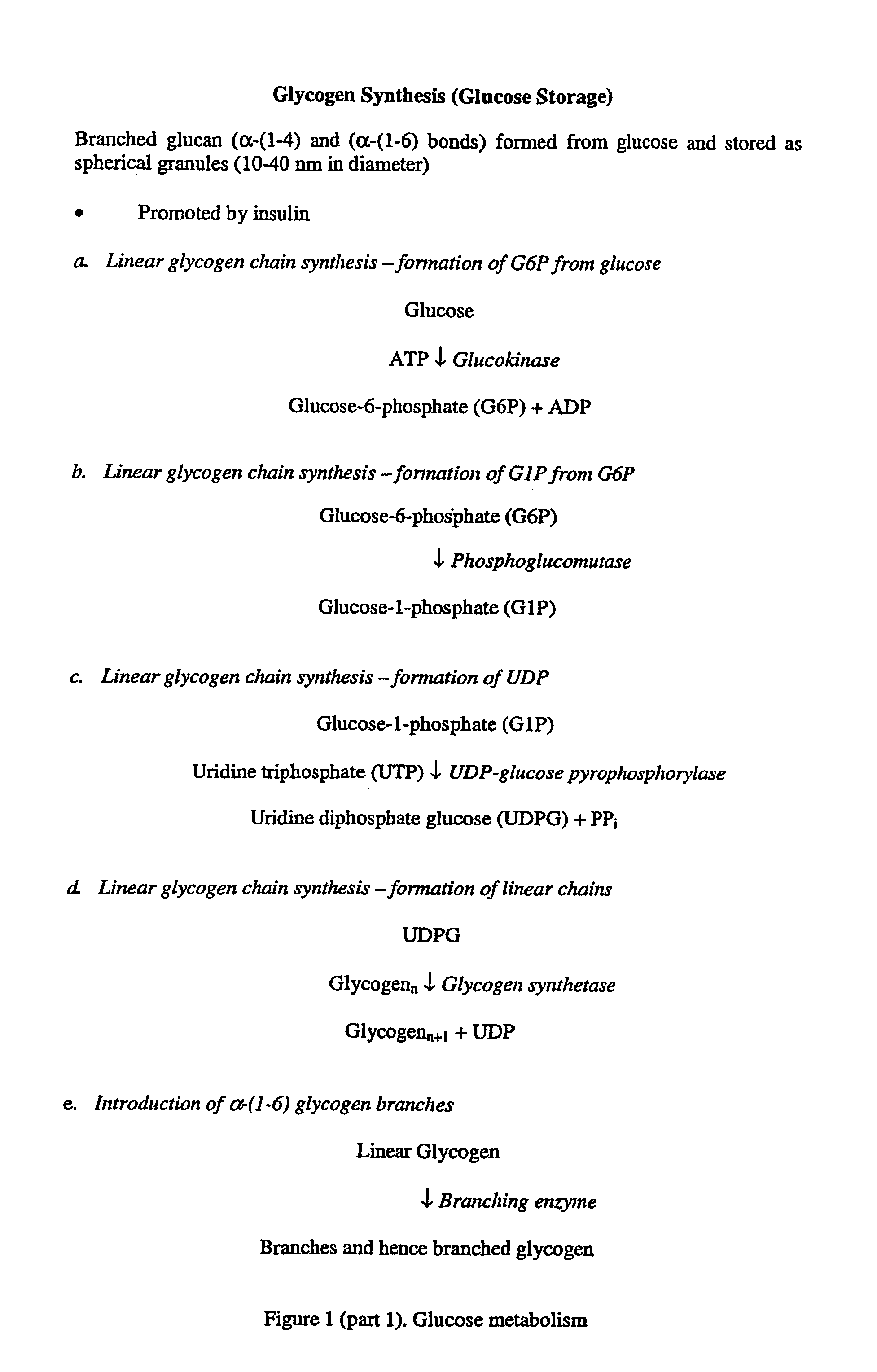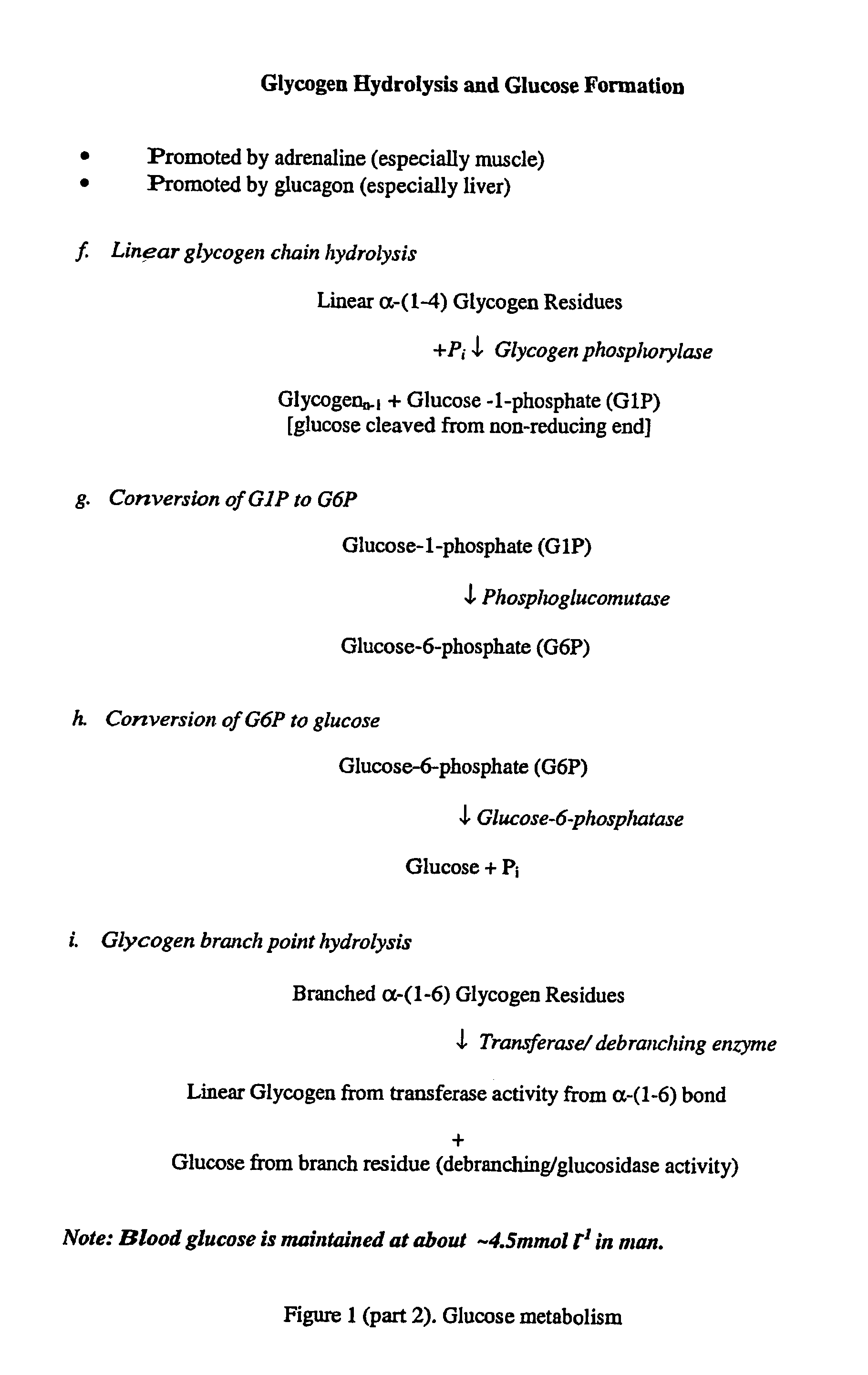Compositions and uses thereof
a technology of serum glucose and glucose, applied in the field of mammals' serum glucose levels control, can solve the problems of complex release of energy from foods and food products, short time period over which products enable serum glucose levels to be maintained within an acceptable range, and high cost, so as to prevent or reduce the night-time hypoglycaemic episode(s), prevent or reduce the hypoglycaemic episode(s), and treat or prevent hypoglycaemia
- Summary
- Abstract
- Description
- Claims
- Application Information
AI Technical Summary
Benefits of technology
Problems solved by technology
Method used
Image
Examples
example 1
[0110]Common native starches (barley, maize, potato, rice and wheat) were evaluated using the Karkalas et al (1992) (in vitro) method to identify their amylase hydrolysis profile and potential for slow release of energy in individuals. These data are presented in FIG. 2.
[0111]As can be seen from FIG. 2 that rice starch has a fast energy release profile initially followed by a much slower process. In contrast, potato and high amylose starches show great resistance towards amylase hydrolysis and are nearly untouched by the enzyme. Starches from normal maize, waxy maize and wheat show continuous slow release energy profile. These data provide the basis for an in vitro selection of the most appropriate starch for this purpose (as discussed later). Note that they do not define the rate or extent of hydrolysis in the actual gut but provide a means of ordering the rate of extent of hydrolysis based on the in vitro system.
example 2
Digestion of Native Starches
[0112]Under clinical supervision, individuals suffering from GSD were fed 60 g samples of native starches dispersed in semi-skimmed milk. The amount of blood glucose and lactate were monitored and are presented in FIGS. 3 and 4. Native potato starch was not consumed in view of is resistance to digestion (and cause of potential colonic disturbance accordingly).
[0113]These data show that waxy rice starch released glucose very quickly where the highest (too high) initial glucose peak (8.7 mmoll−1) at 1 hour post ingestion was obtained. The blood glucose level then dropped to 3 mmoll−1 within 4.5 hours (270 minutes). Normal rice showed a much lower initial glucose peak with a longer release profile corresponding to 3.2 mmoll−1 within 5 hours (300 minutes) but less glucose released in the time course of the experiment compared to the waxy rice starch. High amylose starch too extensively restricted glucose release (although this could be moderated by physical / c...
example 3
Digestion of Native Starches in the Presence of a Pre-gelatinised Starch Thickener
[0117]Under clinical supervision, individuals suffering from GSD were fed 60 g samples of two native starches (wheat or waxy maize), each sample containing 54 g of either starch and 6 g pregelatinised maize starch (National B37, National Starch & Chemical) dispersed in cold semi-skimmed milk. The amount of blood glucose and lactate were monitored and are presented in FIGS. 5 and 6.
[0118]These data show that even in the presence of amorphous (pre-gelatinised) starch the waxy maize starch resists digestion (FIG. 5) more than the wheat starch, which contains a bi-modal distribution of small (˜10 μm average diameter) and large (˜25 μm average diameter) granules but with similar composition (amylose, lipid, moisture and protein). This is reflected in a lower blood lactate (even though the patients started with a higher lactate content when presented with the waxy maize starch (as shown in FIG. 6). The impor...
PUM
| Property | Measurement | Unit |
|---|---|---|
| temperature | aaaaa | aaaaa |
| temperature | aaaaa | aaaaa |
| granular size | aaaaa | aaaaa |
Abstract
Description
Claims
Application Information
 Login to View More
Login to View More - R&D
- Intellectual Property
- Life Sciences
- Materials
- Tech Scout
- Unparalleled Data Quality
- Higher Quality Content
- 60% Fewer Hallucinations
Browse by: Latest US Patents, China's latest patents, Technical Efficacy Thesaurus, Application Domain, Technology Topic, Popular Technical Reports.
© 2025 PatSnap. All rights reserved.Legal|Privacy policy|Modern Slavery Act Transparency Statement|Sitemap|About US| Contact US: help@patsnap.com



